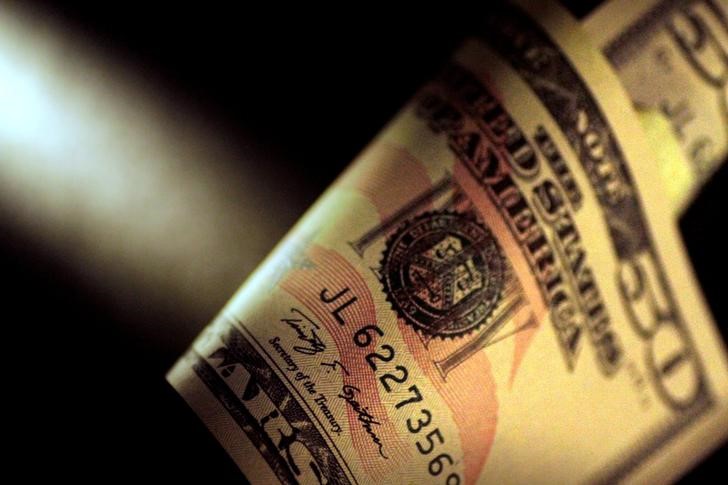Investing.com – The US dollar edged higher Tuesday, while the Canadian dollar, the Mexican peso and the Chinese yuan slipped lower after President-elect Donald Trump raised the specter of a trade war at the start of his new term in office.Â
At 04:50 ET (09:50 GMT), the Dollar Index, which tracks the greenback against a basket of six other currencies, traded 0.1% higher to 106.840, closing in on last week’s two-year peak.Â
Dollar gains on tariffs talk
Trump took to his platform Truth Social late on Monday to threaten 25% tariffs on Mexico and Canada if they don’t better control their borders.
President-elect Trump also threatened to slap an additional 10% tariff on all Chinese imports when he takes office on Jan. 20, adding that he would impose the tariffs until Beijing stops the flow of illegal drugs, particularly fentanyl, into the United States.
“Whilst most in the market assume that Trump will be using tariffs as a large bargaining stick – in this case to tighten US border controls – we would be careful of dismissing their market impact as some grandstanding,” said analysts at ING, in a note.
“If 25% tariffs came close to seeing the light of day in Mexico, USD/MXN would be a 24/25 story, not just 21. We already think the currencies of Mexico and Canada will have a tougher Trump 2.0 than they did during his first term.”
These currencies have already been hit hard, with USD/CAD up 0.9% to 1.4106, and USD/MXN 1.4% higher to 20.5738.
“These policies are generally positive for the dollar. Although the final outcome of the tariff threat may be less severe once negotiations are concluded,” ING added.
Elsewhere, the Federal Reserve releases the minutes later in the session of its early November meeting when it cut rates by a quarter point.
The Fed began cutting interest rates after gaining confidence that inflation would continue to fall, but inflation’s progress toward its 2% goal appears to have slowed.
Euro stable, for now
In Europe, EUR/USD gained 0.1% to 1.0507, but the single currency remains under pressure, having hit a two-year low last week, as the European economic outlook still looks difficult, especially if Donald Trump starts a global trade war.
“That Europe was not mentioned in Trump’s first tariff post could perhaps be welcome news on the Continent. Yet local policymakers will remain fearful that it will just be a matter of time before Trump turns his attention to the European auto sector or tariffs more broadly,” said ING.
“In any case, the threat of further tariffs on China shows the direction of travel on world trade, which is bearish for the euro.”
The European Central Bank has cut rates three times already this year, and investors now see a 50% chance it will cut by 50 basis points on Dec. 12 instead of the usual 25 given weak growth and rising recession risks.
GBP/USD traded flat at 1.2568, just above last week’s six-week low on Friday as economic weakness points to an increased chance of rate cuts from the Bank of England.
Trump’s comments weigh
USD/CNY slipped 0.2% to 7.2546, with the Chinese currency falling to its weakest in nearly four months after Trump’s comments on potential tariffs, but still holding up better than other currencies mentioned.
“We’re taking the view at ING that Chinese authorities are playing the long game here and will not be devaluing the renminbi for some short-term gains for local exporters,” said ING.
USD/JPY fell 0.2% to 153.95, with the Japanese yen benefiting as traders sought safe-haven assets amid renewed trade tensions.
Â


